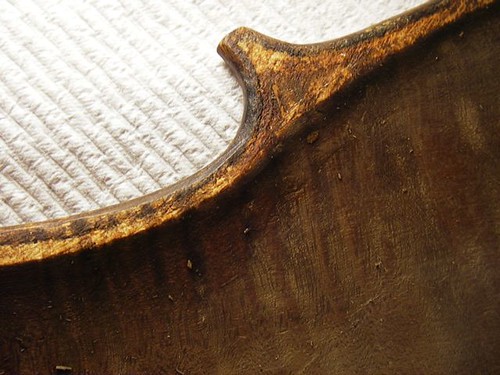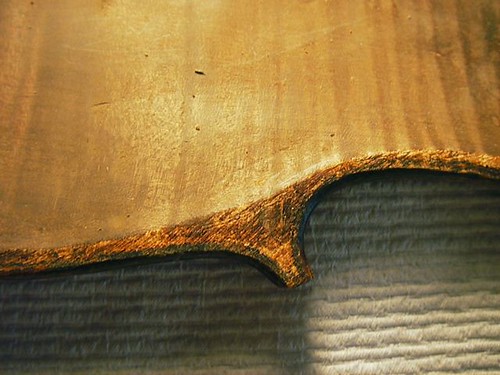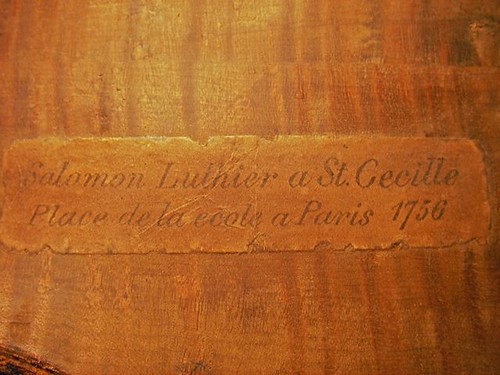Here's another shot of the wide sanded platform left around the edge. A little closer in, you might be able to better make out the parallel sanding marks.
By contrast, this one has almost no platform. The arching dives sharply away from the edge, making a dark shadow. In some places, a previous repairman noted that the ribs overhung too far inside. To 'fix' this, he shoved some woodputty to fill the gap. This back is also darkly stained and has about a pound of dried hide glue, in gobs all over, which I am slowly removing.
Another shot of the very thin edge. If you think of the external overhang, which you can see the stain of on the corner, then go back in 1 mm for the rib, and say, another 1.5-2 mm for the lining, you can see there's not much wiggle room.
The thin-platform fiddle has, on the other hand, a very interesting fake label!
Inside of the "Salomon" violin, as it was when I removed the back (not hard to do, as it was simply hanging on at a few places. The bass-bar appears to be a recent replacement, reasonably done, a new soundpost, and a dust-ball, which is usually a sign that it's been intact and played for a while. Note also the brown staining to the wood, especially visible on the ribs and end-block. Also not the glue spread everywhere on the top, with much excess at the rib-top joint.
Here's the upper-inside back of the "Salomon" violin. You can notice that the wood that was under the neck block and ribs is relatively white, while the rest of it dark. Also note the area from, say, 1 o'clock to 2 o'clock, where I have removed some excess hide glue. The water I used removed some of the 'age'. This is the same water I use to make my coffee, so maybe it will help keep me younger, too! The stain was added to the inside of this fiddle, along with the label, to deceive people. That's it, pure and simple.








No comments:
Post a Comment